When you are contemplating handling a yard situation on your own or hiring professionals to do the job you’ll need to estimate the cost and risk of the job. Most homeowners have little to no idea on how to handle a hazardous tree situation and often neglect obvious warning signs that your backyard needs critical handling. Prior to the extraction, proper preparations and removal plans should be made. This implies that successful emergency tree removal requires the skill of professional arborists.
Reasons for an Emergency Tree Removal
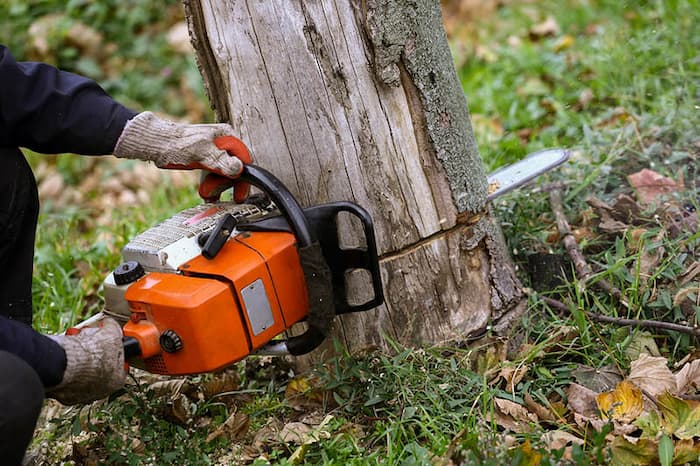
source: pcrtreeservice.com
Noticing the clear signs that your tree needs urgent help is the first step to avoiding any potential harm on your property. Bent, ill, or falling trees, can endanger many lives and neighbouring houses.
A Sick Tree
Certain tree diseases can make the wood appear dead, causing damage like enlarged holes and hollows. Brittle or peeling bark, uneven foliage, decaying leaves, ants and other tree pests, fungus, fragile roots are all signs of a sick tree that’s beyond salvation. In these circumstances, you should seek the assistance of arborists who can safely and legally perform emergency tree removal.
Broken Branches
After a nasty storm and heavy rains, the tree in your yard can become weak and the branches can break, dry out and fall. This is extremely dangerous, and even a single branch can damage your roof or peel away the siding, which will lead to leaks, water damage and cost you an extra fortune.
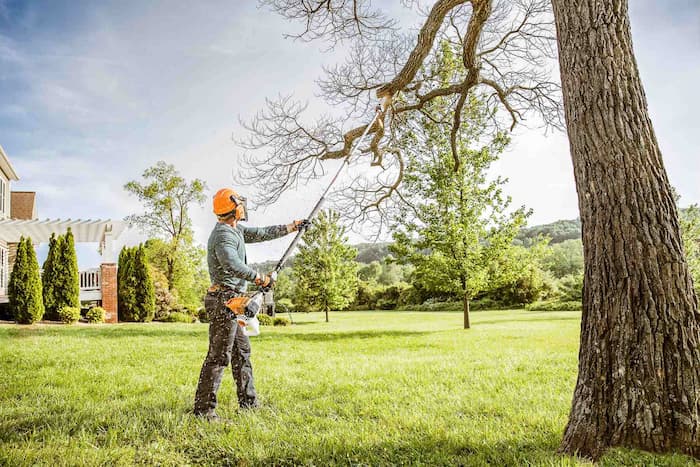
source: feldstreeservices.com
Leaning and Weak Tree
A leaning tree can be unsafe, especially if it threatens to fall on your house, across the walkway, or onto the street. Rain-soaked soils and a significant lean by 40% indicate a possible fall during a future storm. However, a lean does not necessarily signal a problem with the tree. The position of the tree and its roots usually leads to this kind of formation, most commonly due to its growth habits.
Risks That Come With Tree Removals and How Safe Is DIY Tree Removal?
Emergency tree removal is a dangerous job and needs to be handled by professionals and experts in this field. A number of things can go wrong when performing a DIY tree removal, so the best option is to hire professionals to do the job.
If you’re unaware of the electrical installations around your house, you definitely should not start dealing with the removal on your own. You are running a high risk of electrocuting yourself and causing fire outbursts and potentially damaging a few properties at once. Emergency tree services tend to do the job more neatly and can dismantle bigger and heavier trees safely.
The Steps in the Process
Different Removal Approaches
Depending on the state of the tree and its surroundings, professionals can go for one of the following ways to get the tree off your property.
Felling the Entire Tree at Once
Felling the tree is the most standard technique for bringing the tree to the ground. The first step is to calculate the height of the tree. After estimating the height, it is necessary to assess the area and check whether there is enough room to safely drop the tree. In a big city environment, there is insufficient space to securely drop the entire tree, thus it must be dismantled in portions.
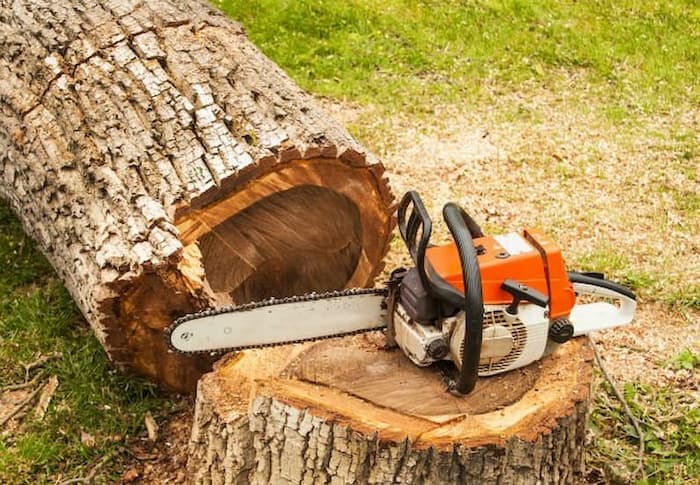
source: crtreeservice.com
Gradual Reduction of the Tree
Trees can be bigger in size and may not be a good candidate for felling. So, the proper way to handle big timber and long boughs is to gradually size down the tree.
Finding a good location to establish equipment is the most crucial component of a tree removal strategy. Once the gear is in position, the climber will cut and drop all unnecessary limbs. After removing all of the branches and leaving only the trunk, he will remove the stump to the required lengths. These bits are occasionally chopped and dumped on the ground. The branches and logs are always bundled into a designated landing area.
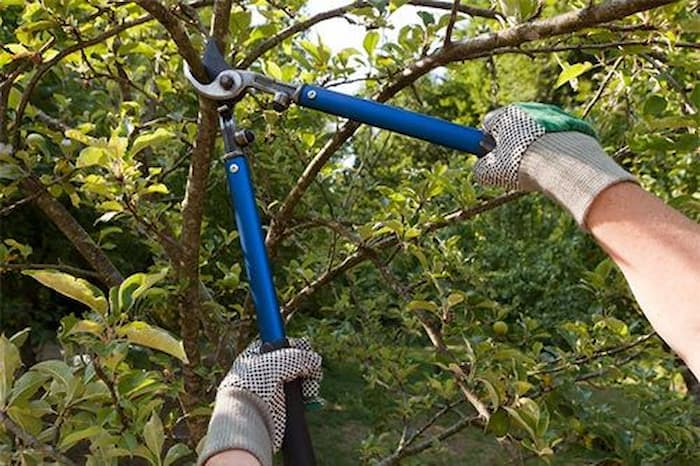
source: pinterest.com
Crane Tree Removal Method
The safest and efficient way of tree removal might be the crane method. If you have enough space in your yard and a safe operating radius, this will be the most optimal and time-saving option for you.
To create stability during operation, the crane must be relatively flat on the ground. The installation process typically takes thirty minutes. Each tree is unique and will require a customized removal strategy. Prior to the crane operation, a removal plan is being created.
Simultaneously, the crane operator must apply the appropriate amount of force and push the crane into the proper location for piece extraction. When the piece is completely sliced, it will be securely lifted and steered through the air to the drop zone.
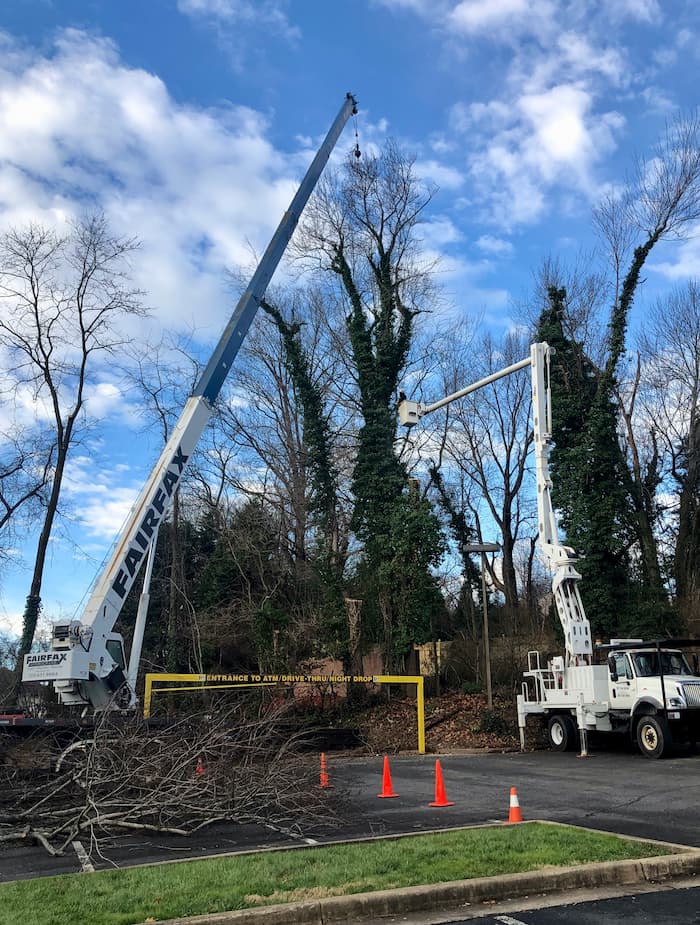
source: vicstreeservice.com
Clearing Out the Area for Work
Before handling the tree removal, the most important measure is to ensure the working area is clean of any debris and garbage. It is necessary to thoroughly clean the area you’re going to need for work. Cleaning does not always include eradicating debris from the yard, but removing personal goods and alerting people and neighbours to beware of the area where the tree will be pulled out.
Using the Leftover Lumber
After you finished the tree removal job, plenty of leftover lumber will be available for use. However, keep in mind that heavily damaged trees may have been home to pest infestation or other illnesses, and won’t be fit for recycled use. If that’s not the case, here are some interesting uses of the timber:
Cutting Firewood Pieces
One of the most popular benefits from trees once they’ve been cut down is to make firewood. This is a useful tactic to repurpose a lot of the wood from your tree and make excellent use of the firewood throughout winter.
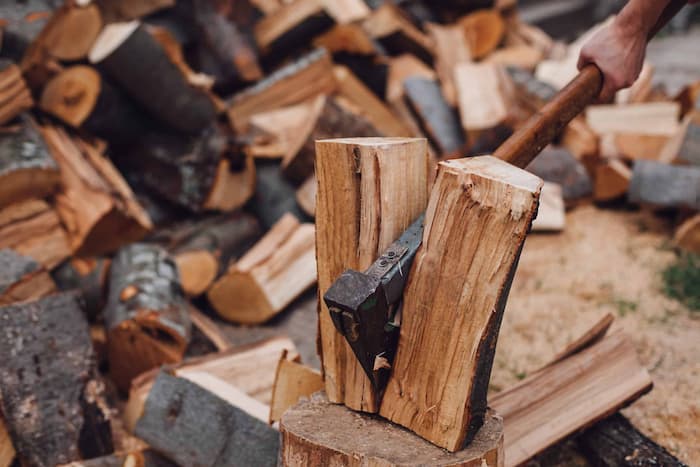
source: awesomeaxes.com
Use Logs and Stumps for Garden Furniture
If you’re lacking in garden furniture, upcycle the logs and leftover stumps for benches, tables and chairs. This is a nice method to preserve a tree and make great use of it.
Using Stumps as Kitchen Supplies
Unfinished wood stumps serve as great tabletop decorations. If you love kitchen equipment from natural materials, the wood may be sanded and oiled to produce cutting boards. Rather than spending money on pricey gadgets, make the smarter choice and produce your own kitchen items. Smaller pieces of wood may be cut into coasters to protect your furniture.












